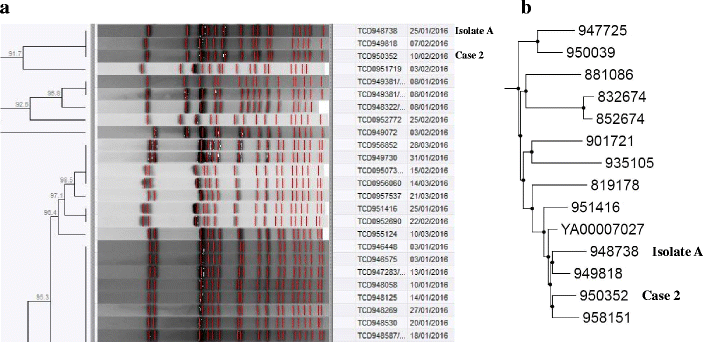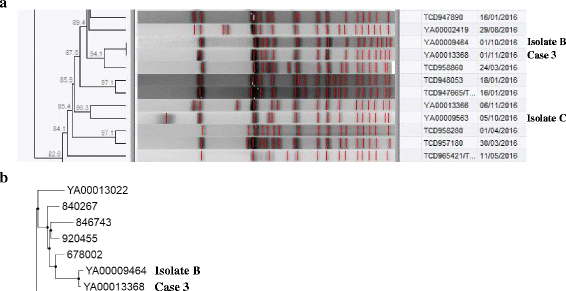Laboratory-acquired infections of Salmonella enterica serotype Typhi in South Africa: phenotypic and genotypic analysis of isolates
- PMID: 28962627
- PMCID: PMC5622435
- DOI: 10.1186/s12879-017-2757-2
Laboratory-acquired infections of Salmonella enterica serotype Typhi in South Africa: phenotypic and genotypic analysis of isolates
Abstract
Background: Workers in clinical microbiology laboratories are exposed to a variety of pathogenic microorganisms. Salmonella species is among the most commonly reported bacterial causes of laboratory-acquired infections. We report on three cases of laboratory-acquired Salmonella enterica serotype Typhi (Salmonella Typhi) infection which occurred over the period 2012 to 2016 in South Africa.
Methods: Laboratory investigation included phenotypic and genotypic characterization of isolates. Phenotypic analysis included standard microbiological identification techniques, serotyping and antimicrobial susceptibility testing. Genotypic analysis included the molecular subtyping methodologies of pulsed-field gel electrophoresis analysis, multilocus sequence typing and whole-genome sequencing (WGS); with WGS data analysis including phylogenetic analysis based upon comparison of single nucleotide polymorphism profiles of isolates.
Results: All cases of laboratory-acquired infection were most likely the result of lapses in good laboratory practice and laboratory safety. The following critical issues were highlighted. There was misdiagnosis and misreporting of Salmonella Typhi as nontyphoidal Salmonella by a diagnostic laboratory, with associated public health implications. We highlight issues concerning the importance of accurate fluoroquinolone susceptibility testing and interpretation of results according to updated guidelines. We describe potential shortcomings of a single disk susceptibility screening test for fluoroquinolone susceptibility and suggest that confirmatory minimum inhibitory concentration testing should always be performed in cases of invasive Salmonella infections. These antimicrobial susceptibility testing issues resulted in inappropriate ciprofloxacin therapy which may have been responsible for failure in clearance of pathogen from patients. Salmonella Typhi capsular polysaccharide vaccine was not protective in one case, possibly secondarily to a faulty vaccine.
Conclusions: Molecular subtyping of isolates proved effective to investigate the genetic relatedness of isolates. Molecular subtyping data interpreted together with epidemiological data allowed us to pinpoint the most likely sources for our cases of laboratory-acquired infection.
Keywords: Genotyping; Laboratory-acquired infection; MLST; Molecular subtyping; PFGE; Salmonella Typhi; South Africa; WGS; Whole-genome sequencing.
Conflict of interest statement
Ethics approval and consent to participate
Ethical approval to publish this case study was obtained by Human Research Ethics Committees from the University of the Witwatersrand (certificate number M1703100) and from the University of Cape Town (reference number 306/2017).
Consent for publication
Informed consent for writing this publication was obtained from all patients - written informed consent was obtained. This publication has not documented any potentially-identifying information about the patients.
Competing interests
The authors declare that they have no competing interests.
Publisher’s Note
Springer Nature remains neutral with regard to jurisdictional claims in published maps and institutional affiliations.
Figures



References
-
- Koay AS, Jegathesan M, Rohani MY, Cheong YM. Pulsed-field gel electrophoresis as an epidemiologic tool in the investigation of laboratory acquired Salmonella typhi infection. Southeast Asian J Trop Med Public Health. 1997;28(1):82–84. - PubMed
Publication types
MeSH terms
Substances
Grants and funding
LinkOut - more resources
Full Text Sources
Other Literature Sources

